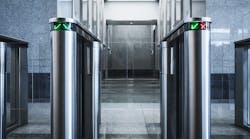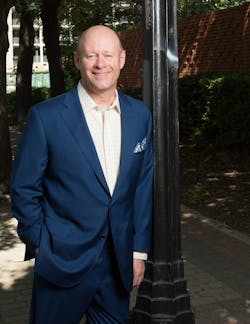You may be tempted to answer that question with a list of the technologies you’ve invested in—the latest cameras, sophisticated access control and alarms everywhere they need to be. But technology alone won’t enhance the safety and security of the people in your building, argues Jeff McKissack, president of Defense By Design.
In his Sunday presentation at the 2023 BOMA International Conference & Expo, he’ll explain why making individual people safer on-site is the only way to enhance collective safety—and how that can positively impact tenant retention and acquisition, a key concern with today’s low office occupancy rates.
“Unless you’ve served in the military, law enforcement or security, or grew up with family in military, law enforcement or security, most people have not had someone speak to them about personal safety since sixth grade,” McKissack explained. “We outgrew talking dogs, puppets, jingles and coloring books, and we pretty much got turned out on our own. Thinking, tapping into instincts, and using situational awareness and common sense—these things are not taught.”
That’s where property managers come in.
Whose Responsibility Is It?
The perception of who should be responsible for training and educating individuals about safer behaviors varies, McKissack said. “If you ask the tenants, it’s a matter for property management. If you ask property management, they assume responsibility for common areas, but they are quick to point out that what happens in individual office suites amongst tenants are really the tenant’s responsibility.”
Ultimately, property managers know the building best. They’re better positioned than anyone else to take on a leadership role where everyone’s safety is concerned. The training you can furnish to people will help “keep tenants out of the emergency room and management companies out of the courtroom and newsroom,” McKissack said.
“It comes down to education and simple training,” McKissack added. “Good instincts and good training equal good prevention for everyone involved. You can tell people ‘If you see something, say something’ all day long, but if you’re not teaching what it is they’re supposed to be looking for, they’re not going to know it when they see it.”
Where Technology Falls Short—And How Training Closes the Gap
Most security technologies focus on reacting to problems that are already occurring, said McKissack. They help mitigate risk, but they can’t jump off the wall and intervene. Access control can be somewhat proactive, but it’s vulnerable to overrides by untrained employees who are targeted by strangers pretending to be security personnel, delivery drivers or someone with an appointment. Comprehensive training that’s repeated regularly can help change behavior in a way that keeps everyone safer.
“Whatever your measures are, if they’re not impacting or changing human behavior, it’s not enough. We are our weakest link,” McKissack said. “It’s not your firewalls. It’s not your access control. It’s uneducated people clicking on the wrong things or downloading the wrong things, or saying, ‘I found this flash drive in the parking lot, I wonder what’s on here’ and plugging it in. You’ve got to have something that actually impacts people and their behaviors.”
Once you start educating people in your building on a regular basis about how to keep themselves safe, you’re going above and beyond for security—and where retention is concerned, “the people who are really paying your bills are going to notice,” McKissack said. “They’re going to notice crime in your building isn’t what it is in the buildings down the street. Low or no incidents is going to translate well to tenants.” People shopping for office space compare crime statistics just like people shopping for houses or comparing colleges do, he added. The better your building performs compared to similar properties, the better chance you have of attracting new tenants and keeping the ones you already have.
Prepare for the Paradigm Shift
McKissack’s session promises to deliver a wider perspective of what’s truly included in safety and security, with real-world examples drawn from his 35 years of experience in the industry. Attendees will learn not only how to improve safety, but also how to “leverage good security for good HR and good PR,” McKissack said.
Haven’t registered for the 2023 BOMA International Conference & Expo yet? Click here to complete your registration!




